Popular categories
Looking for a yarn?
Order DROPS Fabel from Wool Warehouse Direct Ltd

|
DROPS Fabel uni colour 75% Wool, 25% Polyamide |
1.60 £ /50g |
Order |

|
DROPS Fabel 75% Wool, 25% Polyamide |
1.70 £ /50g |
Order |

|
DROPS Fabel long print 75% Wool, 25% Polyamide |
1.80 £ /50g |
Order |
Clicking the ORDER button will redirect you to Wool Warehouse Direct Ltd website
Order DROPS Needles & Hooks
Clicking the ORDER button will redirect you to Wool Warehouse Direct Ltd website
The yarn cost is calculated from the pattern’s smallest size and the yarn’s cheapest product type. Looking for an even better price? You might find it on the DROPS Deals!
Berlingot Cardigan
DROPS stripy jacket with ¾ sleeves in double thread “Fabel”. Size S-XXXL
Size: S – M – L – XL – XXL – XXXL
Materials: DROPS Fabel, from Garnstudio
Colour no 161, pink dream:
150-150-150-200-200-200 g
Colour no 159, red chilli:
150-150-150-200-200-200 g
Colour no 151, guacamole:
150-150-150-200-200-200 g
Colour no 153, tex mex:
150-150-150-200-200-200 g
DROPS pointed and circular needle (80 cm) size 5 mm - or size needed to obtain 17 sts x 22 rows in stocking st with double thread Fabel = 10 x 10 cm.
DROPS crochet hook size 3 mm – for button covers
DROPS Wood button, no 501: 5-5-5-6-6-6 pcs.
-------------------------------------------------------
Alternative Yarn – See how to change yarns here
Yarn Groups A to F – Use the same pattern and change the yarn here
Yarn usage using an alternative yarn – Use our yarn converter here
-------------------------------------------------------
Women Jackets & Cardigansbottom up flounce round neck sewn in sleeves stocking stitch stripes
Order DROPS Fabel from Wool Warehouse Direct Ltd

|
DROPS Fabel uni colour 75% Wool, 25% Polyamide 1.60 £ /50g Order |

|
DROPS Fabel print 75% Wool, 25% Polyamide 1.70 £ /50g Order |

|
DROPS Fabel long print 75% Wool, 25% Polyamide 1.80 £ /50g Order |
Clicking the ORDER button will redirect you to Wool Warehouse Direct Ltd website
Order DROPS Needles & Hooks
Clicking the ORDER button will redirect you to Wool Warehouse Direct Ltd website
The yarn cost is calculated from the pattern’s smallest size and the yarn’s cheapest product type. Looking for an even better price? You might find it on the DROPS Deals!
- English (UK/cm)
- Česky - not translated
- Dansk
- Deutsch
- Eesti keel
- English (US/in)
- Español
- Français
- Íslenska - not translated
- Italiano
- Magyar
- Nederlands
- Norsk
- Polski
- Português
- Suomi
- Svenska
- English (UK/cm), Bulgaria
- English (UK/cm), Croatia
- English (UK/cm), Greece
- English (UK/cm), Latvia
- English (UK/cm), Lithuania
- English (UK/cm), Romania
- English (UK/cm), Slovenia
- Česky, Slovakia - not translated
Pattern instructions
Moss st: First row: *K1/P1*, repeat from *-*. Second row: P over K, K over P. Repeat second row.
Pattern: See diagram M.1. The diagram shows the pattern from the RS side.
Stripes:
Body piece:
Colour no 161 + 159:
From casting on row to 17-17-18-18-19-19 cm.
Colour no 161 + 151:
From 17-17-18-18-19-19 cm to 34-34-36-36-38-38 cm.
Colour no 151 + 153:
From 34-34-36-36-38-38 cm to 50-51-53-54-56-58 cm.
Colour no 153 + 159:
From 50-51-53-54-56-58 cm to finished measurements.
Sleeve:
Colour no 161 + 159:
From casting on row to 10-10-10-10-10-10 cm.
Colour no 161 + 151:
From 10-10-10-10-10-10 cm to 19-20-20-20-20-20 cm.
Colour no 151 + 153:
From 19-20-20-20-20-20 cm to 28-29-29-30-30-30 cm.
Colour no 153 + 159:
From 28-29-29-30-30-30 cm to finished measurements.
Buttonhole: Make buttonholes on right front piece. 1 buttonhole = cast off 4th st from mid front and cast on 1 new st on return row.
Make buttonholes when piece measures:
Size S: 12, 23, 33, 43 and 53 cm.
Size M: 12, 23, 34, 45 and 55 cm.
Size L: 12, 23, 34, 45 and 56 cm.
Size XL: 12, 22, 31, 40, 49 and 58 cm.
Size XXL: 12, 22, 32, 41, 50 and 59 cm.
Size XXXL: 12, 22, 32, 42, 52 and 61cm.
Front and back piece: Knitted back and forth on circular needle from mid front. Cast on 284-310-336-362-401-440 sts (incl 12 front band sts each side towards mid front) on circular needle size 5 mm with 1 thread no 161 and 1 thread no 159 and work stripes – see above. Work 2 rows garter st and continue as follows from RS: 12 moss sts – see above (front band), M.1 on the next 260-286-312-338-377-416 sts, 12 moss sts (front band). After 1 vertical repeat of M.1 = 164-178-192-206-227-248 sts on row. Continue in stocking st with 12 moss sts each side. Insert 2 Marking Threads (MT) in piece, 44-47-51-54-60-65 sts in from each side (back piece = 76-84-90-98-107-118 sts). Remember the knitting tension! When piece measures 8 cm dec 1 st on both sides of each MT on every 3-4-4.5-5-6-6.5 cm a total of 4 times = 148-162-176-190-211-232 sts. Remember buttonholes on right front piece! When piece measures 24-26-28-30-32-34 cm inc 1 st on both sides of each MT on every 9-8.5-8-7.5-7-6.5 cm a total of 3 times = 160-174-188-202-223-244 sts. When piece measures 46-47-48-49-50-51 cm cast off 3 sts on both sides of each MT for armhole and now complete back and front pieces separately.
Back piece: = 68-76-82-90-99-110 sts.
Dec to shape the armhole on every other row: 3 sts 0-0-0-0-1-1 time, 2 sts 1-2-3-4-4-6 times and 1 st 0-1-1-2-2-3 times = 64-66-68-70-73-74 sts. When piece measures 64-66-68-70-72-74 cm cast off the middle 24-24-26-26-27-28 sts for neck and dec 1 st on neckline on next row = 19-20-20-21-22-22 sts left on each shoulder. Cast off when piece measures 66-68-70-72-74-76 cm.
Left front piece: = 40-43-47-50-56-61 sts. Dec for armhole as described for back piece = 38-39-40-40-43-43 sts. When piece measures 54-56-57-59-60-62 cm put 12 sts towards mid front on a thread and dec to shape the neckline on every other row: 3 sts 1 time, 2 sts 1 time and 1 st 2-1-3-2-4-4 times = 19-20-20-21-22-22 sts left on shoulder. Cast off when piece measures 66-68-70-72-74-76 cm.
Right front piece: Like left front piece, but mirrored.
Sleeve: Knitted back and forth on pointed needles. Cast on 38-40-42-44-46-48 sts (incl 1 edge st each side) on needle size 5 mm with 1 thread no 161 and 1 thread no 159 and work stripes – see above. Work 6 rows moss st and continue in stocking st, at the same time inc 10 sts evenly on first row = 48-50-52-54-56-58 sts. When piece measures 5 cm inc 1 st each side on every 3.5-3-2.5-2-1.5-1.5 cm a total of 7-8-9-11-12-13 times = 62-66-70-76-80-84 sts. When piece measures 29-29-28-28-27-25 cm (less on the larger sizes because of larger sleeve cap) dec to shape the sleeve cap each side on every other row: 3 sts 1 time, 2 sts 3 times, 1 st 1-2-3-4-5-7 times, then 2 sts each side until piece measures 36-37-37-38-38-38 cm, dec 3 sts 1 time each side and cast off. Sleeve measures approx 37-38-38-39-39-39 cm.
Assembly: Sew shoulder seams. Pick up approx 84 to 97 sts (incl sts on threads) round neckline on circular needle size 5 mm with 1 thread no 153 and 1 thread no 159, work 4 rows garter st back and forth on needle, cast off. Set in sleeves and sew sleeve seam inside 1 edge st.
Button covers: Crochet 5-5-5-6-6-6 covers - 3-3-3-3-3-3 in colour no 161 and 2-2-2-3-3-3 in colour no 159 - with crochet hook size 3 in single thread Fabel as follows:
2 ch, then 16 tr in the first ch, finish with 1 sl st at the top of first tr (= round 1)
Round 2: 1 dc in each tr and finish with 1 sl st in first dc from beg of round (= 16 dc).
Round 3: 1 tr (replace first tr with 3 ch) in every other dc and finish with 1 sl st in first tr from beg of round = 8 tr.
Put buttons inside cover, sew round the edge of cover and tighten thread. Sew on buttons to fit buttonholes.
Diagram

|
= K from RS, P from WS |

|
= slip 1 st as if to K, K2 tog, psso |

|
= 1 yo between 2 sts |

What can you do with our patterns? You can share DROPS patterns online, using the pattern original picture, materials, name and number. But you are NOT ALLOWED to reproduce the complete pattern digitally in any way. Yarn stores are welcome to use the DROPS pattern database to promote the sale of our assortment. You can print out our patterns, make as many copies as you’d like. The only thing we ask is that you don't make any changes / additions to the original printed document. And that the patterns according to the DROPS philosophy are given out to the consumers for free. Editorials that wish to publish our patterns in printed books or magazines can contact us for more information. The sale of garments based on DROPS patterns is permitted as long as they are sold as single items or per order. Further commercial use of the patterns is not permitted. It has to be clearly stated that the garment is made based on a design from DROPS DESIGN. The use of clothing labels of which DROPS DESIGN forms part is conditioned by the inclusion of the following text: “A DROPS DESIGN made by …..”. The use of DROPS photos for marketing purposes/sales is only permitted in connection with the use/sale of DROPS products. The photos may not be cut or edited and the logo should be clearly visible.
We reserve the right to withdraw the permission for use of our patterns at any time, notwithstanding the reason.
Each of our patterns has specific tutorial videos to help you.
These step-by-step tutorials might also help you:
Why is the knitting/crochet tension so important?
Knitting tension is what determines the final measurements of your work, and is usually measured per 10 x 10 cm. It is provided like so: number of stitches in width x number of rows in height - eg: 19 stitches x 26 rows = 10 x 10 cm.
The knitting tension is very individual; some people knit/crochet loosely while others work tightly. You adjust the knitting tension with the needle size, which is why the suggested needle size is only meant as a guide! You need to adjust this (up or down) to ensure that YOUR knitting tension matches the knitting tension provided in the pattern. If you work with a different knitting tension than provided you will have a different yarn consumption, and your work will have different measurements than what the pattern suggests.
The knitting tension also determines which yarns can replace each other. As long as you achieve the same knitting tension you can replace one yarn with another.
See DROPS lesson: How to measure your tension/gauge
See DROPS video: How to make a gauge tension swatch
How do I know how many balls of yarn I need?
The required amount of yarn is provided in grams, eg: 450 g. To calculate how many balls you’ll need you first need to know how many grams are in 1 ball (25g, 50g or 100g). This information is available if you click on the individual yarn quality on our pages. Divide the amount required with the amount of each ball. For example, if each ball is 50g (the most common amount), the calculation will be as follows: 450 / 50 = 9 balls.
Can I use a different yarn than what the pattern suggests?
The important thing when changing from one yarn to another is that the knitting/crochet tension remains the same. This is so that the measurements of the finished piece will be the same as on the sketch provided. It is easier to achieve the same knitting tension using yarns from the same yarn group. It is also possible to work with multiple strands of a thinner yarn to achieve the knitting tension of a thicker one. Please try our yarn converter. We recommend you to always work a test swatch.
Please NOTE: when changing yarn the garment might have a different look and feel to the garment in the photo, due to individual properties and qualities of each yarn.
See DROPS lesson: Can I use a different yarn than the one mentioned in the pattern?
What are the yarn groups?
All our yarns are categorised into yarn groups (from A to F) according to thickness and knitting tension – group A contains the thinnest yarns and group F the thickest. This makes it easier for you to find alternative yarns to our patterns, should you wish to switch yarn. All yarns within the same group have a similar knitting tension and can easily replace each other. However, different yarn qualities have different structures and properties which will give the finished work a unique look and feel.
How do I use the yarn calculator?
At the top of all our patterns you’ll find a link to our yarn calculator, which is a helpful tool should you wish to use a different yarn than suggested. By filling in the yarn quality you wish to replace, the amount (in your size) and number of strands, the calculator will present good alternative yarns with the same knitting tension. Additionally it will tell you how much you’ll require in the new qualities and whether you’ll need to work with multiple strands. Most skeins are 50g (some are 25g or 100g).
If the pattern is worked with multiple colours, every colour will have to be calculated separately. Similarly, if the pattern is worked with several strands of different yarns (for example 1 strand Alpaca and 1 strand Kid-Silk) you will have to find alternatives for each, individually.
Why do you show discontinued yarns in the patterns?
Since different yarns have different qualities and textures we have chosen to keep the original yarn in our patterns. However, you can easily find options among our available qualities by using our yarn calculator, or simply pick a yarn from the same yarn group.
It is possible that some retailers still have discontinued yarns in stock, or that someone has a few skeins at home that they would like to find patterns for.
The yarn calculator will provide both alternative yarn as well as required amount in the new quality.
What size should I knit?
If you think it's hard to decide what size to make, it can be a good idea to measure a garment you own already and like the size of. Then you can pick the size by comparing those measures with the ones available in the pattern's size chart.
You'll find the size chart at the bottom of the pattern.
See DROPS lesson: How to read size chart
Why do I get the wrong knitting tension with the suggested needle size?
The needle size provided in the pattern serves only as a guide, the important thing is to follow the knitting tension. And since knitting tension is very individual, you will have to adjust the needle size to ensure that YOUR tension is the same as in the pattern – maybe you’ll have to adjust 1, or even 2 needle sizes, up or down to achieve the correct tension. For this, we recommend that you work test swatches.
Should you work with a different knitting tension than the one provided, the measurements of the finished garment might deviate from the measurement sketch.
See DROPS lesson: How to measure your tension/gauge
See DROPS video: How to make a tension/gauge swatch
Why is the pattern worked top-down?
Working a garment top-down provides more flexibility and room for personal adjustment. For example it is easier to try the garment on while working, as well as making adjustments to length of yoke and shoulder caps.
The instructions are carefully explaining every step, in the correct order. Diagrams are adjusted to the knitting direction and are worked as usual.
How do I work according to a knitting diagram?
The diagram depicts all rows/rounds, and every stitch seen from the right side. It is read from bottom to top, from right to left. 1 square = 1 stitch.
When working back and forth, every other row is worked from the right side and every other row is worked from the wrong side. When working from the wrong side, the diagram will have to be worked reversed: from left to right, knit stitches are purled, purl stitches are knit etc.
When working in the round every round is worked from the right side and the diagram are worked from right to left on all rounds.
See DROPS lesson: How to read knitting diagrams
How do I work according to a crochet diagram?
The diagram depicts all rows/rounds, and every stitch seen from the right side. It is worked from bottom to top, from right to left.
When working back and forth every other row is worked from the right side: from right to left and every other row is worked from the wrong side: from left to right.
When working in the round, every row in the diagram are worked from the right side, from right to left.
When working a circular diagram you start in the middle and work your way outwards, counter clockwise, row by row.
The rows usually start with a given number of chain stitches (equivalent to the height of the following stitch), this will either be depicted in the diagram or explained in the pattern.
See DROPS lesson: How to read crochet diagrams
How do I work several diagrams simultaneously on the same row/round?
Instructions for working several diagrams after each other on the same row/round, will often be written like so: “work A.1, A.2, A.3 a total of 0-0-2-3-4 times". This means you work A.1 once, then A.2 is worked once, and A.3 is repeated (in width) the number of times provided for your size – in this case like so: S = 0 times, M = 0 times, L=2 times, XL= 3 times and XXL = 4 times.
The diagrams are worked as usual: begin with the first row in A.1, then work the first row in A.2 etc.
See DROPS lesson: How to read knitting diagrams
See DROPS lesson: How to read crochet diagrams
Why are the sleeves shorter in larger sizes?
The total width of the garment (from wrist-to-wrist) will be larger in the larger sizes, despite the actual sleeves being shorter. The larger sizes have longer sleeve caps and wider shoulders, so there will be a good fit in all sizes.
Where on the garment is the length measured?
The measurement sketch/schematic drawing provides information regarding the full length of the garment. If it’s a jumper or a jacket the length is measured from the highest point on the shoulder closest to the neckline, and straight down to the bottom of the garment. It is NOT measured from the tip of shoulder. Similarly, the length of yoke is measured from the highest point on the shoulder and down to where yoke is split into body and sleeves.
On a jacket measures are never taken along bands, unless specifically stated. Always measure inside band stitches when measuring the length.
See DROPS lesson: How to read a schematic drawing
What is a repeat?
Diagrams are often repeated on the round or in height. 1 repeat is the diagram the way it appears in the pattern. If it says to work 5 repeats of A.1 in the round, then you work A.1 a total of 5 times after/next to each other in the round. If it says to work 2 repeats of A.1 vertically/in height you work the entire diagram once, then begin again at the start and work the entire diagram one more time.
Why does the piece start with more chain stitches than it’s worked with?
Chain stitches are slightly narrower than other stitches and to avoid working the cast-on edge too tight, we simply chain more stitches to begin with. The stitch count will be adjusted on the following row to fit the pattern and measurement sketch.
Why increase before the rib edge when the piece is worked top-down?
The rib edge is more elastic and will contract slightly compared to, for example, stocking stitch. By increasing before the rib edge, you avoid a visible difference in width between the rib edge and the rest of the body.
Why increase in the cast-off edge?
It’s very easy to cast off too tightly, and by making yarn overs while casting off (and simultaneously casting these off) you avoid a too tight cast off edge.
See DROPS video: How to bind off with yarn overs (yo)
How do I increase/decrease on every 3rd and 4th row/round alternately?
To achieve an even increase (or decrease) you can increase on, for example: every 3rd and 4th row alternately, like so: work 2 rows and increase on the 3rd row, work 3 rows and increase on the 4th. Repeat this until the increase is complete.
See DROPS lesson: Increase or decrease 1 st on every 3rd and 4th row alternately
How can I work a jacket in the round instead of back and forth?
Should you prefer to work in the round instead of back and forth, you may of course adjust the pattern. You’ll need to add steeks mid-front (usually 5 stitches), and follow the instructions. When you would normally turn and work from the wrong side, simply work across the steek and continue in the round. At the end you’ll cut the piece open, pick up stitches to work bands, and cover the cut edges.
See DROPS video: How to knit steeks and cut open
Can I work a jumper back and forth instead of in the round?
Should you prefer to work back and forth instead of in the round, you may of course adjust the pattern so you work the pieces separately and then assemble them at the end. Divide the stitches for the body in 2, add 1 edge stitch in each side (for sewing) and work the front and back pieces separately.
See DROPS lesson: Can I adapt a pattern for circular needles into straight needles?
Why is the pattern slightly different than what I see in the photo?
Pattern repeats can vary slightly in the different sizes, in order to get the correct proportions. If you’re not working the exact same size as the garment in the photo, yours might deviate slightly. This has been carefully developed and adjusted so that the complete impression of the garment is the same in all sizes.
Make sure to follow instructions and diagrams for your size!
How do I make a women’s size garment into a men’s size one?
If you have found a pattern you like which is available in women’s size it’s not very difficult to convert it to men’s size. The biggest difference will be the length of sleeves and body. Start working on the women size that you think would fit across the chest. The additional length will be worked right before you cast off for the armhole/sleeve cap. If the pattern is worked top-down you can add the length right after the armhole or before the first decrease on sleeve.
Regarding additional yarn amount, this will depend on how much length you add, but it is better with a skein too many than too few.
How do I prevent a hairy garment from shedding?
All yarns will have excess fibres (from production) that might come off as lint or shedding. Brushed yarns (ie hairier yarns) have more of these loose, excess fibres, causing more shedding.
Shedding also depends on what is worn under or over the garment, and whether this pulls at the yarn fibres. It’s therefore not possible to guarantee that there will be no shedding
Below are some tips on how to get the best result when working with hairier yarns:
1. When the garment is finished (before you wash it) shake it vigorously so the looser hairs come off. NOTE: do NOT use a lint roller, brush or any method that pulls at the yarn.
2. Place the garment in a plastic bag and put it in your freezer - the temperature will cause the fibres to become less attached to each other, and excess fibres will come off easier.
3. Leave in the freezer for a few hours before taking it out and shaking it again.
4. Wash the garment according to the instructions on the yarn label.
Why does my garment pill?
Pilling is a natural process that happens to even the most exclusive of fibers. It's a natural sign of wear and tear that is hard to avoid, and that is most visible in high friction areas of your garment like a sweater's arms and cuffs.
You can make your garment look as new by removing the pilling, using a fabric comb or a pill/lint remover.
In the meantime, you can read the questions and answers that others have left to this pattern or join the DROPS Workshop on Facebook to get help from fellow knitters/crocheters!
You might also like...
Berlingot Cardigan |
||||||||||
 |
 |
|||||||||
DROPS stripy jacket with ¾ sleeves in double thread “Fabel”. Size S-XXXL
DROPS 106-12 |
||||||||||
|
Garter st, back and forth on needle: K all rows. Moss st: First row: *K1/P1*, repeat from *-*. Second row: P over K, K over P. Repeat second row. Pattern: See diagram M.1. The diagram shows the pattern from the RS side. Stripes: Body piece: Colour no 161 + 159: From casting on row to 17-17-18-18-19-19 cm. Colour no 161 + 151: From 17-17-18-18-19-19 cm to 34-34-36-36-38-38 cm. Colour no 151 + 153: From 34-34-36-36-38-38 cm to 50-51-53-54-56-58 cm. Colour no 153 + 159: From 50-51-53-54-56-58 cm to finished measurements. Sleeve: Colour no 161 + 159: From casting on row to 10-10-10-10-10-10 cm. Colour no 161 + 151: From 10-10-10-10-10-10 cm to 19-20-20-20-20-20 cm. Colour no 151 + 153: From 19-20-20-20-20-20 cm to 28-29-29-30-30-30 cm. Colour no 153 + 159: From 28-29-29-30-30-30 cm to finished measurements. Buttonhole: Make buttonholes on right front piece. 1 buttonhole = cast off 4th st from mid front and cast on 1 new st on return row. Make buttonholes when piece measures: Size S: 12, 23, 33, 43 and 53 cm. Size M: 12, 23, 34, 45 and 55 cm. Size L: 12, 23, 34, 45 and 56 cm. Size XL: 12, 22, 31, 40, 49 and 58 cm. Size XXL: 12, 22, 32, 41, 50 and 59 cm. Size XXXL: 12, 22, 32, 42, 52 and 61cm. Front and back piece: Knitted back and forth on circular needle from mid front. Cast on 284-310-336-362-401-440 sts (incl 12 front band sts each side towards mid front) on circular needle size 5 mm with 1 thread no 161 and 1 thread no 159 and work stripes – see above. Work 2 rows garter st and continue as follows from RS: 12 moss sts – see above (front band), M.1 on the next 260-286-312-338-377-416 sts, 12 moss sts (front band). After 1 vertical repeat of M.1 = 164-178-192-206-227-248 sts on row. Continue in stocking st with 12 moss sts each side. Insert 2 Marking Threads (MT) in piece, 44-47-51-54-60-65 sts in from each side (back piece = 76-84-90-98-107-118 sts). Remember the knitting tension! When piece measures 8 cm dec 1 st on both sides of each MT on every 3-4-4.5-5-6-6.5 cm a total of 4 times = 148-162-176-190-211-232 sts. Remember buttonholes on right front piece! When piece measures 24-26-28-30-32-34 cm inc 1 st on both sides of each MT on every 9-8.5-8-7.5-7-6.5 cm a total of 3 times = 160-174-188-202-223-244 sts. When piece measures 46-47-48-49-50-51 cm cast off 3 sts on both sides of each MT for armhole and now complete back and front pieces separately. Back piece: = 68-76-82-90-99-110 sts. Dec to shape the armhole on every other row: 3 sts 0-0-0-0-1-1 time, 2 sts 1-2-3-4-4-6 times and 1 st 0-1-1-2-2-3 times = 64-66-68-70-73-74 sts. When piece measures 64-66-68-70-72-74 cm cast off the middle 24-24-26-26-27-28 sts for neck and dec 1 st on neckline on next row = 19-20-20-21-22-22 sts left on each shoulder. Cast off when piece measures 66-68-70-72-74-76 cm. Left front piece: = 40-43-47-50-56-61 sts. Dec for armhole as described for back piece = 38-39-40-40-43-43 sts. When piece measures 54-56-57-59-60-62 cm put 12 sts towards mid front on a thread and dec to shape the neckline on every other row: 3 sts 1 time, 2 sts 1 time and 1 st 2-1-3-2-4-4 times = 19-20-20-21-22-22 sts left on shoulder. Cast off when piece measures 66-68-70-72-74-76 cm. Right front piece: Like left front piece, but mirrored. Sleeve: Knitted back and forth on pointed needles. Cast on 38-40-42-44-46-48 sts (incl 1 edge st each side) on needle size 5 mm with 1 thread no 161 and 1 thread no 159 and work stripes – see above. Work 6 rows moss st and continue in stocking st, at the same time inc 10 sts evenly on first row = 48-50-52-54-56-58 sts. When piece measures 5 cm inc 1 st each side on every 3.5-3-2.5-2-1.5-1.5 cm a total of 7-8-9-11-12-13 times = 62-66-70-76-80-84 sts. When piece measures 29-29-28-28-27-25 cm (less on the larger sizes because of larger sleeve cap) dec to shape the sleeve cap each side on every other row: 3 sts 1 time, 2 sts 3 times, 1 st 1-2-3-4-5-7 times, then 2 sts each side until piece measures 36-37-37-38-38-38 cm, dec 3 sts 1 time each side and cast off. Sleeve measures approx 37-38-38-39-39-39 cm. Assembly: Sew shoulder seams. Pick up approx 84 to 97 sts (incl sts on threads) round neckline on circular needle size 5 mm with 1 thread no 153 and 1 thread no 159, work 4 rows garter st back and forth on needle, cast off. Set in sleeves and sew sleeve seam inside 1 edge st. Button covers: Crochet 5-5-5-6-6-6 covers - 3-3-3-3-3-3 in colour no 161 and 2-2-2-3-3-3 in colour no 159 - with crochet hook size 3 in single thread Fabel as follows: 2 ch, then 16 tr in the first ch, finish with 1 sl st at the top of first tr (= round 1) Round 2: 1 dc in each tr and finish with 1 sl st in first dc from beg of round (= 16 dc). Round 3: 1 tr (replace first tr with 3 ch) in every other dc and finish with 1 sl st in first tr from beg of round = 8 tr. Put buttons inside cover, sew round the edge of cover and tighten thread. Sew on buttons to fit buttonholes. |
||||||||||
Diagram explanations |
||||||||||
|
||||||||||

|
||||||||||
|
Have you made this or any other of our designs? Tag your pictures in social media with #dropsdesign so we can see them! Do you need help with this pattern?You'll find tutorial videos, a Comments/Questions area and more by visiting the pattern on garnstudio.com. © 1982-2024 DROPS Design A/S. We reserve all rights. This document, including all its sub-sections, has copyrights. Read more about what you can do with our patterns at the bottom of each pattern on our site. |
||||||||||
With over 40 years in knitting and crochet design, DROPS Design offers one of the most extensive collections of free patterns on the internet - translated to 17 languages. As of today we count 304 catalogues and 11422 patterns - 11422 of which are translated into English (UK/cm).
We work hard to bring you the best knitting and crochet have to offer, inspiration and advice as well as great quality yarns at incredible prices! Would you like to use our patterns for other than personal use? You can read what you are allowed to do in the Copyright text at the bottom of all our patterns. Happy crafting!












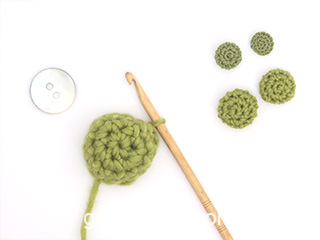





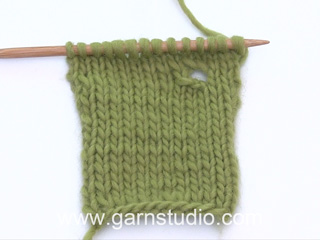












































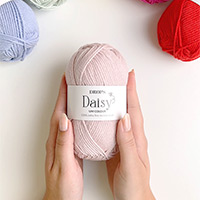
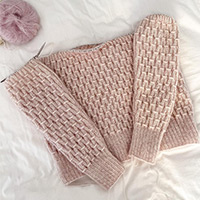
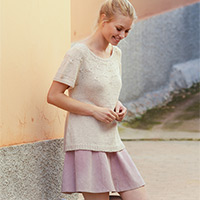
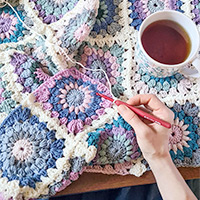
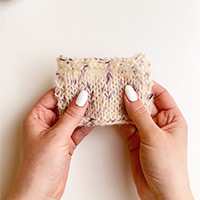
Comments / Questions (59)
Alle Zahlen-Angaben zur Maschenaufnahme können nicht stimmen (auch im Norwegischen Original) ! Das ergibt sich schon rein rechnerisch aus den Angaben der Maschenprobe! Alle Strickteile werden viel, viel,viel zu breit. Bitte geben Sie mir die korrekten Zahlenangaben, damit dieses Model auch strickbar ist. Vielen, vielen Dank!
08.03.2018 - 18:44DROPS Design answered:
Liebe Frau Kobblitz, die Maschenanzahl stimmen mit der Maßskizze und eine Maschenprobe von 17 M = 10 cm in der Breite., z.B. 76 M für Rückenteil (= zwischen den Markeirungen) in der 1. GrÖße = ca 45 cm. Viel Spaß beim stricken!
09.03.2018 - 09:38Anna wrote:
Hei, liker denne jakke veldig godt! Det er bare at orange og rød ikke passer så god til meg. Hvilke farge nr ville dere anbefale i blå/grønn?
08.09.2016 - 13:24DROPS Design answered:
Hej Anna. Tag en snak med din DROPS butik, de hjaelper dig gerne med at finde den rette kombination. God fornöjelse
09.09.2016 - 12:58Guten Tag, ich stricke diese Jacke und möchte und mein Bund unter rollt sich jetzt schon ein . Kann ich,wenn die Jacke fertig gestrickt habe ,dämpfen und bügeln oder mache ich mir da was kaputt? Liebe Grüße Christa K-H
05.04.2016 - 19:16DROPS Design answered:
Liebe Christa, wir raten dazu, mit Dämpfen eher vorsichtig zu sein. Bei Fabel könnten Sie das allerdings vorsichtig versuchen. Ich würde Ihnen aber empfehlen, es erst einmal mit anfeuchten und spannen zu versuchen.
06.04.2016 - 09:28Diese Jacke würde ich gerne für ein Kleinkind stricken Größe 92/104. Gibt es die Anleitung auch in Kindergröße? Vielen Dank!
12.05.2015 - 17:21DROPS Design answered:
Leider haben wir dieses Modell nicht als Kinder- bzw. Babymodell. Aber vielleicht mögen Sie die Jacke Baby Drops 17-23, die ist auch in Fabel und bis Größe 104 vorhanden. Oder vielleicht Baby Drops 16-19, 16-3, 18-17 oder 18-25? Sie können im Prinzip alle Jacken der Garngruppe A mit Fabel stricken, Sie können z.B. bei der Suche die Voreinstellungen auf "Baby" und bei Maschenprobe auf "26-23 Maschen (Garngruppe A)" stellen und als Suchwort "Jacke" eingeben. Möglich ist auch, wie bei der von Ihnen gewünschten Jacke Fabel doppelt zu nehmen und stattdessen dann in Garngruppe C zu suchen (2 Fäden Gruppe A = 1 Faden Gruppe C). Lassen Sie sich einfach inspirieren!
12.05.2015 - 21:59Under ryg og forstykke, står der at jeg skal tage en maske ind på begge sider af mærketrådene på hver 3. - 4. - 4½ - 5. - 6. - 6½. cm. , i alt 4 gange. Hvad er det for cm. der er tale om? Skal jeg måle opad på arbejdet så første gang er ved 8 cm., næste gang ved 11cm., så 12cm.? det vil jo i hvert fald ikke give 4 gange, men 7 gange. Og derefter passer maskeantallet ikke længere med op skriften. Jeg forstår simpelthen ikke hvad det er for cm. der er nævnt. Hjælp!
24.02.2015 - 20:18DROPS Design answered:
Hej Lone, tallene står for hver 3.cm (hver tredje cm) i den mindste størrelse, hver 4.cm (fjerde cm) i den næste str og så videre. Dvs hvis du strikker den mindste tager du ind for hver tredje cm ialt 4 gange. God fornøjelse!
25.05.2015 - 15:45Hej Ska strax börja sticka den här fina koftan. Har en fråga om armarna: Det ska ökas 10 m på första varvet, menar man på moss-stickningens eller på slätstickningens första varv? Anna
04.02.2015 - 11:31DROPS Design answered:
Hej Anna, Du ökar på första slätstickade varvet. Lycka till!
04.02.2015 - 11:50Isabelle wrote:
J'avais acheté tous les coloris pour faire le modèle 106.29, je préfère ce modèle, sauf que j'aimerais faire des manches longues, je ne vois même pas d'explication pour faire les manches et à quel moment je dois rectifier pour allonger les manches. merci
18.10.2013 - 21:22DROPS Design answered:
Bonjour Isabelle, les explications des manches se trouvent juste après le devant droit, un espace supplémentaire a été ajouté pour les rendre plus visibles. Bon tricot!
19.10.2013 - 10:32C'est top, que de couleurs, on en mangerait ! Je viens de découvrir ce site : Que du bonheur, je le recommande déjà autour de moi. Un grand merci aux stylistes, Quel talent !
23.05.2008 - 10:22Mønster til fargebytte står i starten av oppskiften.
14.03.2008 - 09:21Jeg kan ikke se ud af opskriften, hvor mange striber der er i hver farve
13.03.2008 - 18:11